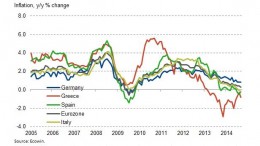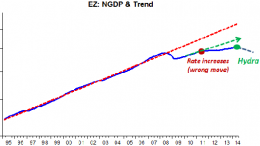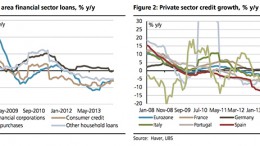Stimulus, bitte!
MADRID | The Corner | The eurozone’s inflation slipped in September to its lowest level since October 2009 (0.3%), raising fears of an eventual third recession in six years. Prices have been now been in the ECB’s “danger zone” of below 1% for 12 consecutive months. And yet Germany, the biggest economy in the EZ, is torn between deficit control and growth, relieved with a weak euro helping its exports but worried about the same depreciation policy leading to less pressure to implement reforms in countries like France.




